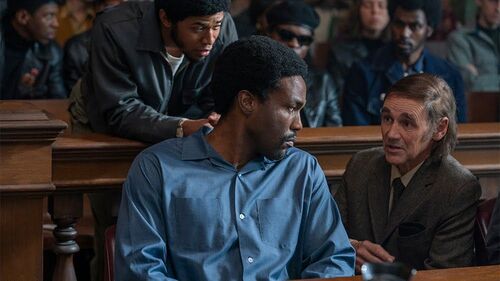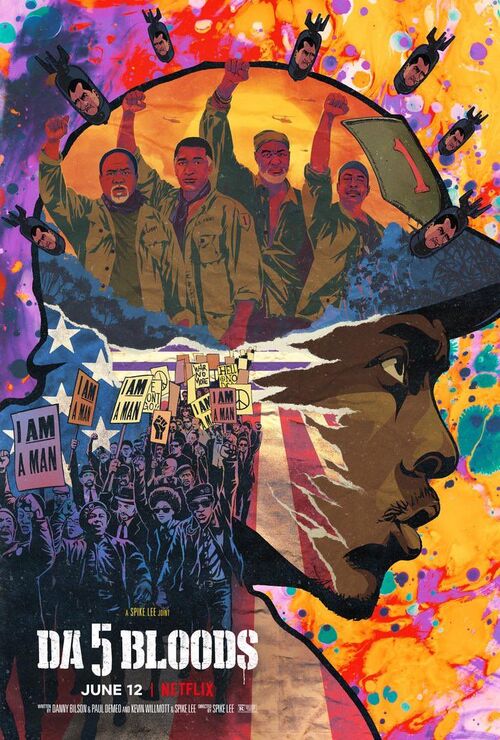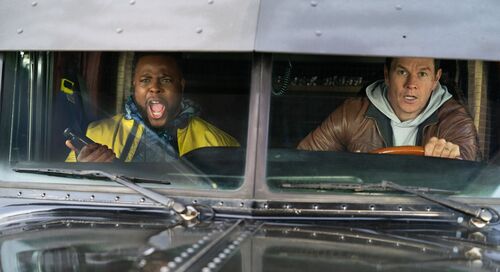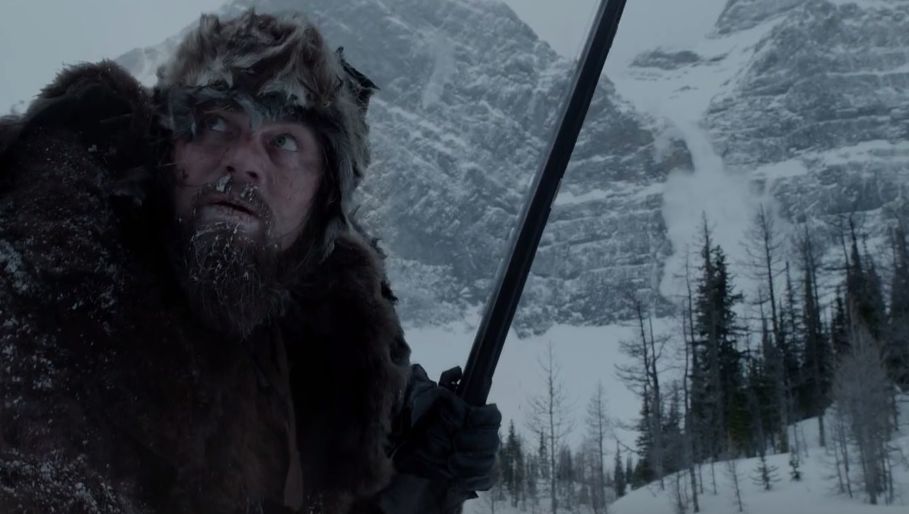
The Revenant
 Alejandro Gonzalez Iñárritu’s “The Revenant” pulls us into a harsh world, a more punishing period in time. He does this meticulously and transfixes us, he draws us in by hoisting up a banner of alluring optics. We get close and we realise this beautiful banner emits an aura of sheer cold and is stained with murk and blood. It doesn’t matter. We still want to caress this banner despite the vehement stains, true grit and exhaustingly violent components. It still comes together so beautifully.
Alejandro Gonzalez Iñárritu’s “The Revenant” pulls us into a harsh world, a more punishing period in time. He does this meticulously and transfixes us, he draws us in by hoisting up a banner of alluring optics. We get close and we realise this beautiful banner emits an aura of sheer cold and is stained with murk and blood. It doesn’t matter. We still want to caress this banner despite the vehement stains, true grit and exhaustingly violent components. It still comes together so beautifully.
From a narrative standpoint, the story from Iñárritu and co-writer Mark L. Smith’s isn’t overly impressive but I doubt it’s trying to be. It really is a simple story but one told in a cinematically epic way. The simplest ideas and themes are conveyed with overwhelming detail and superb filmmaking techniques. The filmmaker doesn’t just want to tell us a story. He wants us to experience it and he does this via intimate close ups of primal brawls and exhausting long takes of brushing up with the onscreen entities to stimulating effect.
These attributes are in play early on as a group of American fur-trappers led by Andrew Henry (Domhnall Gleeson) face up to an incursion from a group of Native Americans. Iñárritu’s active camera is in the thick of affairs as arrows pierce through the air into frightened men and the stench of fear permeates through Iñárritu’s visceral close shots on the back of impressive unbroken takes. The Native Americans raid the American party for the fur pelts they have amassed but we later learn of they are also looking the kidnapped daughter of their leader.
There is a further meeting point between the Native Americans and the Americans with Leonardo DiCaprio’s Hugh Glass and his half-Native American son, Hawk (Forrest Goodluck). As the film unravels, we take note of the portrayal of Native American who are given solid screen time and some surprising depth. They aren’t really portrayed as antagonists but as having some quasi spiritual aura. They search for the kidnapped girl – Powaqa – but we sense this kidnapped daughter means more.
During the ambush, Henry orders his party to retreat leaving the valuable fur pelts. John Fitzgerald (Tom Hardy) isn’t too happy with this decision. He was banking on a healthy pay day of the pelts. He is a source of conflict and as some may have gathered from the trailer, he emits a nefarious vibe and has a dislike for Glass and his Native American ties. The film however walks away from the easier path and proceeds to work at its crux – Man and Nature. Glass is away from the party in small contrivance when he is attacked by raging grizzly bear protecting her cubs. It does not end well for him.
Essays will be written about this sequence. It should be deconstructed from every possible standpoint in film schools. It easily one of the most stunning film sequence I’ve ever seen. Iñárritu takes his time in this 5 plus minute sequence that sees Glass battered and mauled bloody to an inch of his life. The camera gets so close you can smell the warm breath of this bear and hear it decide between taking or sparing life. It’s punishing. It’s terrifying. It’s viciously primal. Its extraordinarily humbling. Glass somehow manages to fend of the bear and survive the attack and this sequence is symbolic of what the film seeks to establish as a metaphor for man’s relationship with nature.
Glass’ party catch up to him and are faced with the choice of being weighed down by the near dead colleague as the Native American tribe nears them or put Glass out of his misery and be on their way with much more haste. They eventually go for an in-between. They carry Glass for a while till they can proceed no further with him. They now agree to split up with most of the men going ahead whilst Fitzgerald, Hawk and young Bridger (an increasingly impressive Will Poulter) stay with the immobile Glass to keep him safe and comfy till he dies. They, minus Hawk, stay for a fee I should add.

The reprehensible Fitzgerald has no patience for waiting for a Glass to die. His griping and fidgeting culminates in him killing Hawk in front of Glass with Bridger absent. More deceit follows and Fitzgerald and a sympathetic Bridger all but bury Glass alive. Glass is however a tough cookie to say the least. He is the revenant (google it). He rises from the dead. As to whether he rises to life or purgatory is a different question. Maybe this film could be about purgatory of sorts. Maybe all the American men died in the earlier raid and Glass was killed by the bear. Maybe Fitzgerald didn’t survive a certain Native American encounter he tells us about. I never a saw a man lose his scalp and live. I digress.
Glass begins his quest for vengeance. He learns more on his quest though. Glass pulls himself through sheer cold and a harsh terrain for miles on end. He shouldn’t be alive. He knows that and almost believes God may have granted him life just to carry out his vengeance or perhaps understand something deeper. Vengeance may be on his mind but the film is more of a survival story till the final act. Glass makes the long solitary and arduous journey back to Fitzgerald with only his memories and nature by his side. Nature may have taken Glass to brink to prove a point. It later turns savior on a few occasions.
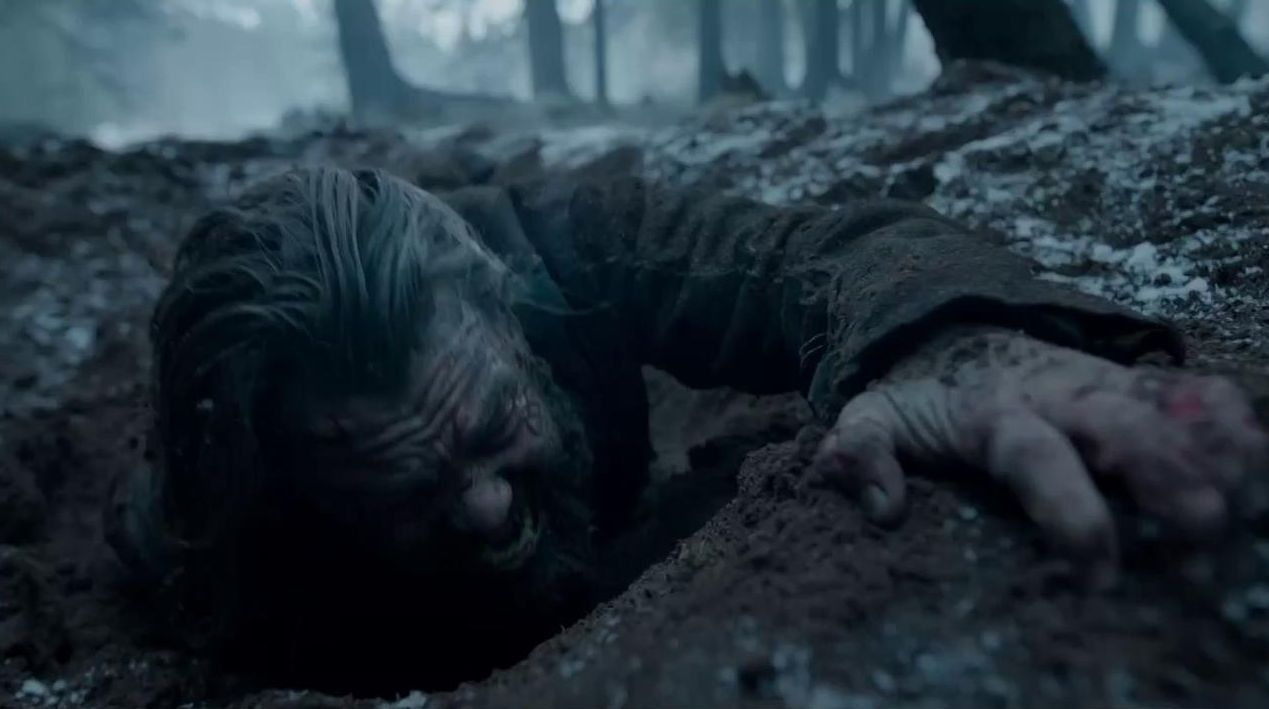
Through our protagonist’s torturous journey, we have also have Iñárritu’s meticulous direction and Emmanuel Lubezki’s alluring DP work as company. Iñárritu throws in pain, murk and grit. Lubezki makes these components look artistic and beautiful. He covers the snow covered ridges with a bleak but striking grey pallet. The film also, almost gratuitously, starts to adopt some Terrance Malik qualities and you guessed it, Lubezki has worked with Malik – on Tree of Life (the only Malik film I’ve properly seen). Some of the projections of reminisce and shots of foliage and towering tree trunks mirror that film. It gets a little self-indulgent and annoying hurting the films pace but remains undeniably beautiful.
The Revenant features strong performances from the core supporting act consisting Gleeson, Goodluck and Poulter, and Hardy. Goodluck and Poulter get more screen time than expected and acquit themselves well against the more seasoned Hardy. Hardy himself is channeling that physicality we know him for and he sells Fitzgerald as not only a bit of a repulsive coward but also a bit unhinged. This is DiCaprio’s film though. He is as committed as ever here. A couple of years ago he committed to some unexpected and outrageous physical comedy but here he is committed to being one with nature in this physically and mentally demanding performances and he is up for it. A lot of his performance is in the eyes, in the the gnashing of teeth, in the beastly grunts.
The Revenant is as much a story about survival as it is about vengeance. There is deep philosophical subtext to Iñárritu’s use of nature in this film. Nature here almost doubles as God. The Native Americans are probably his arch angels. Vengeance is for the creator according to this film and other beliefs. Maybe “nature” is just teaching Glass a lesson – one he learns after trusting it. The film is simply engaging in that way demanding multiple viewings not just because of Innaritus storytelling but pure ambitious breathtaking craft.
